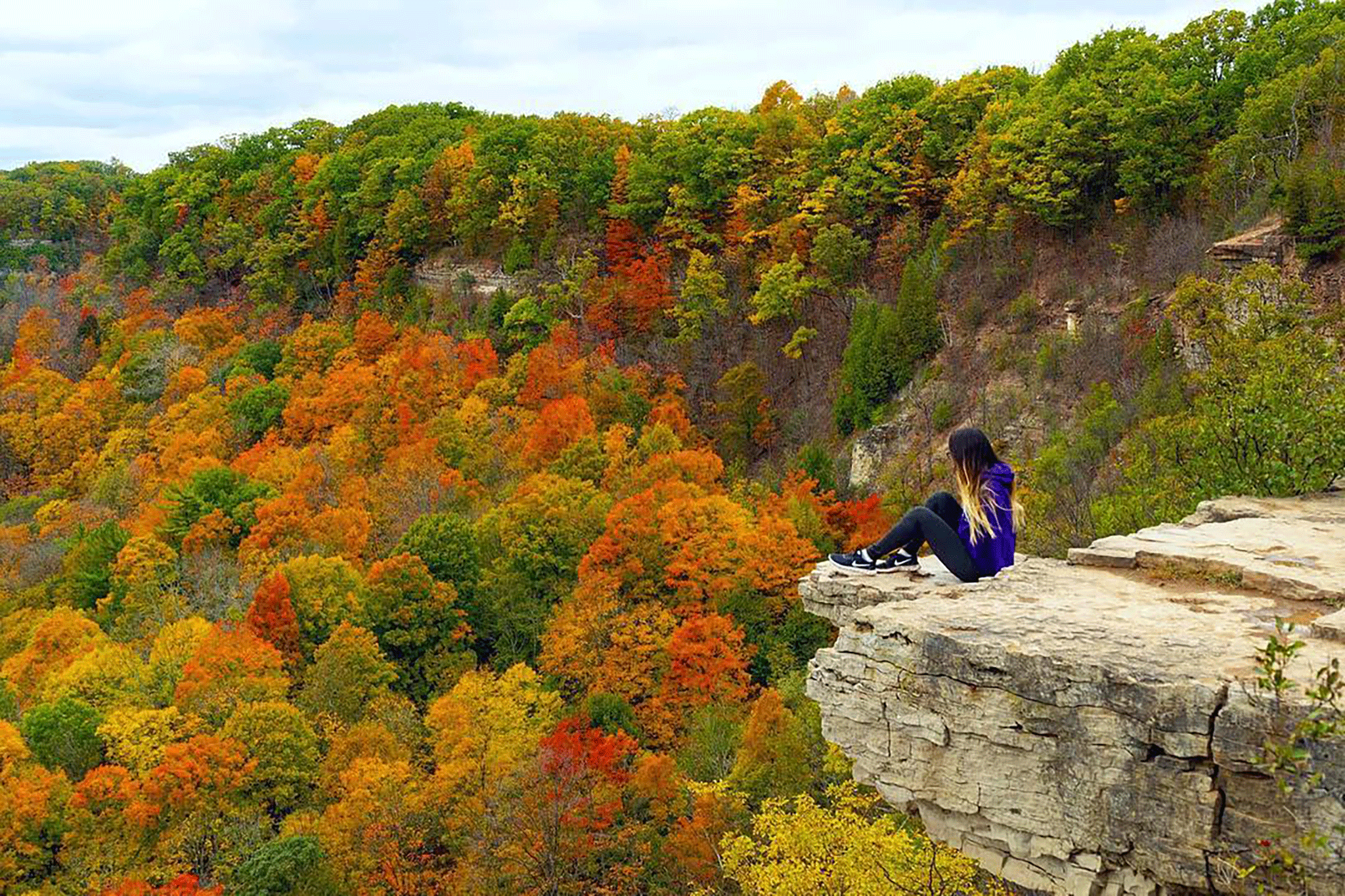
This cliff near Toronto is the most popular selfie spot right now
Ah, the Instagrammer. A common sight—but none more common than in the back woods of Hamilton in the fall, where you can catch selfie-seekers in their natural habitat.
Just an hour from Toronto is the 3.9-kilometre-long Dundas Peak Trail, which draws people from far and wide for its picturesque views.
With incredible vistas of Hamilton and the forest below, braving this escarpment gives free passes to social media users to finally use the caption, "Living on the edge" accurately.
One of the most beautiful places to be during fall, it's not surprising then that tons of people are flocking to Dundas Peak to snap a killer selfie with the turning leaves.
And what photo backdrop is more epic than roaring waterfalls? Webster's Falls is the main attraction at Dundas Peak, but not far past that is Tew's Falls, which is Hamilton's tallest waterfall at a dizzying 41 metres.
The real dare devils like to grab a shot at the most scenic point of all: the peak that overlooks the train tracks and Dundas Valley.
Towering twice the size of the American side of Niagara Falls, just seeing these people stand so close to the edge will make your palms sweat.
It's a great photo for sure.
But I'm just not sure if possibly falling to your death, or at the least, sustaining some serious injuries, is worth doing it for the 'gram.
Latest Videos
Latest Videos
Join the conversation Load comments







